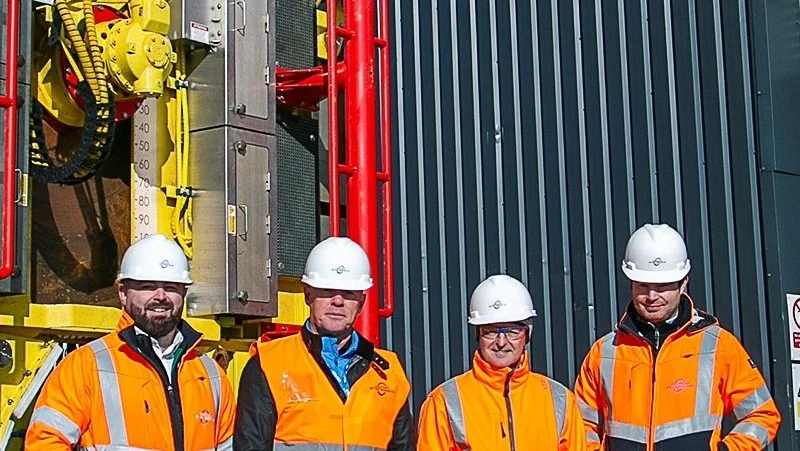 The UK-based decommissioning specialist Decom Engineering's intellectual property (IP) has passed a 'strength test' following an intellectual asset review of its pipeline cutting saw technology and Pipe Coating Removal (PCR) tools by global IP experts Inngot.
The UK-based decommissioning specialist Decom Engineering's intellectual property (IP) has passed a 'strength test' following an intellectual asset review of its pipeline cutting saw technology and Pipe Coating Removal (PCR) tools by global IP experts Inngot.
Decom's C1 range of chop saws has served major hydrocarbon producing regions, and its PCR machine is known for its sustainable and cost-saving credentials as they are capable of safely removing protective coatings from pipes for them to be repurposed in construction and other projects.
To protect its market advantage, Decom commissioned Inngot to report on the strengths of its IP as it ramps up protection in US, Canadian and European markets and in other key regions where its technology has been used, including Australia, Thailand, Malaysia and Brunei.
Safe and effective for decommissioning
The report commissioned to Inngot on the strengths of Decom's IP read, “Decom Engineering has developed safe and effective pipeline cutting equipment for the decommissioning and maintenance of oil and gas pipelines and installations. The patent describes a cutting apparatus designed for versatile, efficient cutting of various materials both above and below sea level, which is useful in decommissioning industries.
“Cleanly cutting through 2" to 46” pipes, the C1 Chopsaw is a single-blade, cold-cutting saw that can be deployed and operated within the harshest working conditions, both onshore and subsea. It is fully certified to 2000m water depth, is customisable, and has blade reverse and hot stab integration capabilities.
“The patents focus on an adaptable, efficient cutting apparatus. The unique features, like multiple cuts per blade, fast cut times, and the use of water cooling systems for surface cutting, demonstrate the practical application of the patented technology, enhancing their marketability and potential for generating cash flows.”
Nick McNally, Decom Engineering Commercial Director, said that the company prioritises strengthening patent protection as an important step to gain an edge over competitors in diverse international markets.
He said, “We know our technology is market leading and of high value so it makes sense to put in place all the necessary protections to ensure we can make the most of the growth opportunities which present themselves.
“When a patent is granted, it prevents a third party from legally manufacturing, importing into, exporting out of, storing or using a patent-protected product in the territory where the patent is granted and valid.
“Working closely with Inngot, we have established the commercial value of our technologies and this has underlined the need to take a rigorous approach if we feel our designs and decades-long expertise is being compromised.”
An analysis by Inngot of Decom’s PCR machine technology, reads, “The patent outlines a comprehensive solution for the efficient removal of protective coatings from pipes. It addresses problems associated with existing methods, such as labour intensiveness, high costs, and environmental risks due to the release of toxic chemicals.
“The invention features a versatile tool carriage that supports various removal tools, including scrapers, sanders, and wire brushes. This adaptability allows for effective coating removal while maintaining energy efficiency. The apparatus is designed to ensure the structural integrity of the pipes, promoting their reuse and minimising environmental impact.
“This system's technological advancements, demonstrated by its ability to remove multiple coating types with 100% waste capture and converting pipes into usable products, make it a practical application of the patent. There is a direct relationship with the product, which has unique features that cater to a specific need in the market. This indicates a clear plan to use the patent to generate cash flows.”
The report also researched existing patents which have been lodged by potential competitors, adding, “The patent analysis was extended to examine the patenting activities of other entities in the same technological sectors so that the company’s position in the broader industry landscape can be assessed. This provides a holistic view that gives a deeper understanding of the company's innovation strategy and its financial implications, as well as identifying both potential competitors and potential acquirers of the IP.”
“The strength of our patented technology is underlined by the number of international projects we are currently engaged on and a strong pipeline of future work on the horizon and into 2025,” said McNally.




